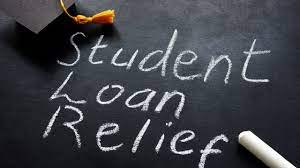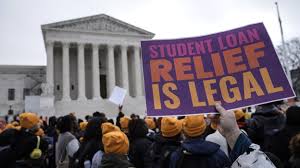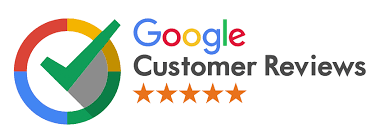
Student Loan Relief: Understanding Options and Benefits
The United States is home to a vast number of students pursuing higher education, and with it comes the challenge of financing their studies. Student loans have become a crucial resource for many individuals, but the burden of repayment can be overwhelming. Fortunately, the USA offers various student loan relief programs designed to ease the financial strain and support borrowers in their journey towards financial stability. In this article, we will explore some of the unique student loan relief options available in the USA.
Income-Driven Repayment Plans
One of the most popular student loan relief options in the USA is the Income-Driven Repayment (IDR) plans. These plans determine the borrower's monthly payment based on their income and family size, making it more manageable for those with lower incomes. Four types of IDR plans exist: Income-Based Repayment (IBR), Pay As You Earn (PAYE), Revised Pay As You Earn (REPAYE), and Income-Contingent Repayment (ICR). Each plan has its eligibility criteria, so borrowers must research and choose the one that best suits their financial situation.
Public Service Loan Forgiveness (PSLF)
The Public Service Loan Forgiveness program is a unique student loan relief option that aims to reward individuals who work full-time in qualifying public service jobs. After making 120 qualifying monthly payments while employed by a qualifying employer, borrowers may be eligible to have their remaining student loan balance forgiven tax-free. This program serves as an incentive for graduates to pursue careers in public service, such as government, non-profit organizations, or the education sector.
State-Specific Loan Forgiveness Programs
In addition to federal programs, various states in the USA offer their own unique student loan forgiveness initiatives. These state-specific programs are tailored to meet the needs of their residents, encouraging graduates to work in particular fields or underserved areas. For instance, some states may offer loan forgiveness for healthcare professionals working in rural communities, teachers serving in low-income schools, or law enforcement officers in specific regions.
Borrower Defense to Repayment
The Borrower Defense to Repayment program provides student loan relief to borrowers who have been defrauded by their educational institutions. If a school engages in deceptive practices, misrepresentation, or violates state laws, affected students can apply for loan forgiveness. This program aims to protect borrowers from predatory schools and ensure they are not burdened with loans incurred due to fraudulent practices.
Temporary Loan Deferment and Forbearance
During challenging financial times, borrowers can find temporary relief through loan deferment or forbearance options. Deferment allows borrowers to temporarily postpone their loan payments due to specific circumstances like unemployment, economic hardship, or enrollment in further education. Forbearance, on the other hand, grants borrowers a temporary reduction or suspension of their monthly payments due to financial difficulties. It's crucial to understand the terms and conditions of deferment or forbearance, as interest may still accrue during these periods.

Teacher Loan Forgiveness
The Teacher Loan Forgiveness program is designed to support educators who work in low-income schools or educational service agencies. Eligible teachers who have completed five consecutive years of full-time teaching may qualify for loan forgiveness of up to $17,500 on their Direct Subsidized and Unsubsidized Loans, as well as their Subsidized and Unsubsidized Federal Stafford Loans.
Perkins Loan Cancellation
Federal Perkins Loan borrowers may be eligible for loan cancellation if they work in specific public service fields, such as teaching, nursing, law enforcement, or serving in the military. The Perkins Loan Cancellation program forgives a percentage of the loan each year of service, eventually leading to complete loan forgiveness.
Income-Sensitive Repayment Plans
While similar to Income-Driven Repayment plans, Income-Sensitive Repayment plans are specific to Federal Family Education Loan (FFEL) borrowers. These plans calculate monthly payments based on the borrower's annual income, but the specific calculation may vary among loan servicers. The goal is to ensure that borrowers with lower incomes have affordable repayment options.
State Tuition Assistance Programs
Several states offer tuition assistance or loan repayment programs as an incentive for college graduates to remain in the state and contribute to the local workforce. These programs often target specific professions experiencing shortages, such as healthcare providers in underserved areas, engineers, or technology specialists.
Loan Rehabilitation
For borrowers who have defaulted on their federal student loans, the Loan Rehabilitation program provides a path to bring the loan out of default. By making nine consecutive on-time, reasonable, and affordable payments, the default status can be removed from the borrower's credit history. Rehabilitation can open up access to additional repayment plans and benefits.
Graduated Repayment Plans
Graduated Repayment plans offer an alternative to standard repayment, especially for borrowers whose income is expected to increase over time. With this plan, the monthly payments start lower and then increase every two years, gradually accommodating the borrower's anticipated salary growth.
Partial Financial Hardship (PFH) and REPAYE Subsidy
Borrowers under the Revised Pay As You Earn (REPAYE) plan who experience partial financial hardship may qualify for an interest subsidy. If the monthly payment under REPAYE doesn't cover the accruing interest on the subsidized portion of the loans, the government will pay the remaining interest for a certain period. This subsidy can alleviate the interest burden for borrowers struggling with low incomes.

The Biden Administration’s Student Loan Debt Relief Plan
Part 1. Final extension of the student loan repayment pause
Due to the economic challenges created by the pandemic, the Biden-Harris Administration has extended the student loan repayment pause a number of times. Because of this, no one with a federally held loan has had to pay a single dollar in loan payments since President Biden took office.
The Biden-Harris Administration’s one-time student debt relief plan is necessary to address the financial harms of the pandemic, provide borrowers with a smooth transition back to repayment, and help borrowers at highest risk of delinquency or default once payments resume.
Congress recently passed a law preventing further extensions of the payment pause. Student loan interest will resume starting on Sept. 1, 2023, and payments will be due starting in October. We will notify borrowers well before payments restart.
Part 2. Providing targeted debt relief to low- and middle-income families
To smooth the transition back to repayment and help borrowers at highest risk of delinquencies or default once payments resume, the U.S. Department of Education will provide up to $20,000 in debt relief to Pell Grant recipients with loans held by the Department of Education and up to $10,000 in debt relief to non-Pell Grant recipients. Borrowers are eligible for this relief if their individual income is less than $125,000 or $250,000 for households.
Student Loan Relief: Understanding Options for Managing Student Debt
As the cost of higher education continues to rise, many students in the USA rely on student loans to finance their studies. While these loans can be a valuable resource, they often lead to significant debt burdens after graduation. However, there are various student loan relief options available to help borrowers manage their debt more effectively. In this article, we will explore some of the key solutions and programs designed to provide relief from student loan debt.
Student Loan Forgiveness:
Student loan forgiveness programs offer a pathway for borrowers to have a portion or the entirety of their student loans forgiven, typically after meeting certain criteria. One of the most well-known programs is the Public Service Loan Forgiveness (PSLF) program, which grants loan forgiveness to individuals working in qualifying public service jobs after making 120 qualifying monthly payments. Additionally, specific professions, such as teachers or healthcare workers serving in underserved areas, may be eligible for targeted loan forgiveness programs.
Student Loan Debt Settlement:
Student loan debt settlement involves negotiating with the lender or loan servicer to settle the debt for less than the total amount owed. While this option is available, it is essential to understand that settling the debt may have negative consequences on one's credit score, and forgiven amounts might be considered taxable income.

Student Debt Release:
Student debt release typically refers to situations where the borrower's obligation to repay the loan is canceled or discharged. This may occur due to severe disabilities, school closures, or fraudulent actions by the educational institution.
Federal Stafford Loan:
The Federal Stafford Loan is a type of federal student loan available to undergraduate and graduate students. It comes in two forms: subsidized, where the government pays the interest while the borrower is in school, and unsubsidized, where the borrower is responsible for the interest. Federal Stafford Loans offer various repayment plans, including income-driven options, providing flexibility to borrowers in managing their debt.
Student Loan Consolidation:
Student loan consolidation allows borrowers to combine multiple federal student loans into one new loan, simplifying repayment with a single monthly payment. While consolidation can streamline the process, it is essential to weigh the potential impact on interest rates and other repayment benefits.
Private Student Loans Relief:
While most relief programs are targeted at federal student loans, some private lenders may offer limited relief options, such as forbearance or temporary payment reductions. It is essential to communicate with private lenders and explore available relief programs on a case-by-case basis.
Education Loan Servicers:
Loan servicers are companies responsible for collecting payments and managing student loan accounts. Popular loan servicers include Great Lakes, Nelnet, and College Ave. Borrowers can work with their loan servicers to explore repayment plans, deferment, and other relief options.

FAQs Question and Answer
Q: How do I qualify for student loan forgiveness in USA?
Under the Higher Education Act and the Department's regulations, a borrower is eligible for forgiveness after making 240 or 300 monthly payments—the equivalent of 20 or 25 years on an IDR plan or the standard repayment plan, with the number of required payments varying based upon when a borrower first took out
Q: How to get the $10,000 loan forgiveness?
If you received a Pell Grant in college and meet the income threshold, you will be eligible for up to $20,000 in debt relief. If you did not receive a Pell Grant in college and meet the income threshold, you will be eligible for up to $10,000 in debt relief.
Q: How do I know if my student loans are forgiven?
The Department of Education says it will begin notifying borrowers today that they qualify for forgiveness. You don't need to take any further action if you're eligible. Loan discharges will begin 30 days after you're notified, and your servicer will inform you that your debt has been discharged.
Q: Who is eligible for student loan in USA?
Be a U.S. citizen or eligible non-citizen. Have a valid Social Security number. Be enrolled or accepted for enrollment as a student with an eligible degree or certificate program, at least half-time. Maintain academic progress in college
Q: Is Biden forgiving $10,000 in student loans?
We will forgive $10,000 in outstanding federal student loans,” Biden said in an August 24, 2022 press conference. “In addition, students who come from low-income families, which allowed them to qualify to receive a Pell Grant, will have their debt reduced $20,000
Q: How long will it take to show student loan forgiveness?
Top administration officials indicated that applications will be processed on a rolling basis through 2023, and they expected a four-to-six week turnaround time between when a borrower submits an application and when they receive student loan forgiveness.
Q: Are student loans forgiven after?
Any outstanding balance on your loan will be forgiven if you haven't repaid your loan in full after 20 years or 25 years, depending on when you received your first loans. You may have to pay income tax on any amount that is forgiven.
Q: Can Indians take student loan in USA?
The cost can be up to $75,000 a year for private colleges and $50,000 a year for public colleges. Federal student loans are fairly famous among U.S. students but they are not available for Indian or any other international students. Instead, they can apply for international students loans.
Q: Do international students get loans in USA?
International students in the U.S. are eligible for student loans, but only private ones. They're not eligible for federal financial aid from the U.S. Department of Education, which includes subsidized and unsubsidized loans.
Q: Can private student loans be deferred?
Private student loans may or may not have an option to postpone payments, and the rules vary among lenders. Contact your loan servicer as early as possible if you want to explore your options. Deferment or forbearance is a temporary pause to your student loan payments for specific situations
Q: Can you negotiate private student loan payoff?
Private student loan lenders who don't want your loan to go into arrears or be charged off may agree to a new plan that lowers your monthly payments. Contact your lender directly to find out what they can do. Still, some may be unwilling to negotiate a new repayment plan unless your loan is in default.





